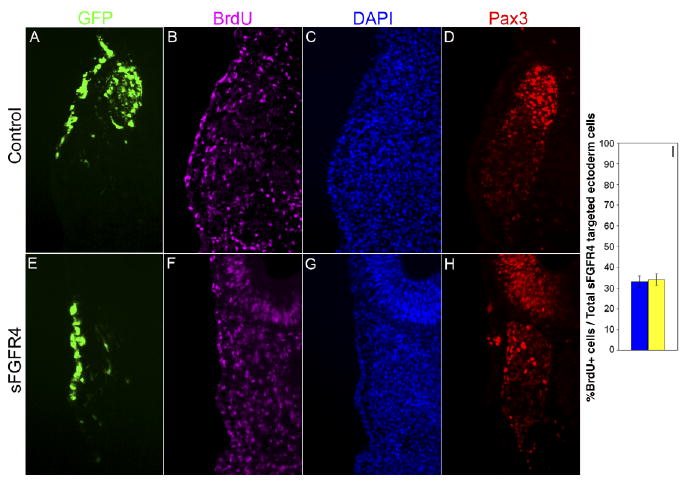Fig. 7.

Blocking fibroblast growth factor (FGF) signaling does not alter the proliferative state of ophthalmic trigeminal (opV) placode cells. A–H: Transverse section through the opV ganglion region of a ∼31 ss embryo, 36 hr after electroporation at the 7–9 ss with the secreted-FGF receptor-4 misexpression construct (sFGFR4) vector (green, A,E), immunostained for Pax3 (red, D,H), bromodeoxyuridine (BrdU; purple, B,F), and DAPI (4′,6-diamidine-2-phenylidole-dihydrochloride;blue, C,G). Cells targeted with sFGFR4 continue to proliferate in opV ectoderm compared with targeted control ectoderm cells. I: Histogram showing percentage of targeted ectoderm cells that were BrdU+/DAPI+ in control (n = 6) and experimental (n = 5) embryos. Error bars depict SEM. The difference between experimental and controls is not statistically significant (P < 0.84).
